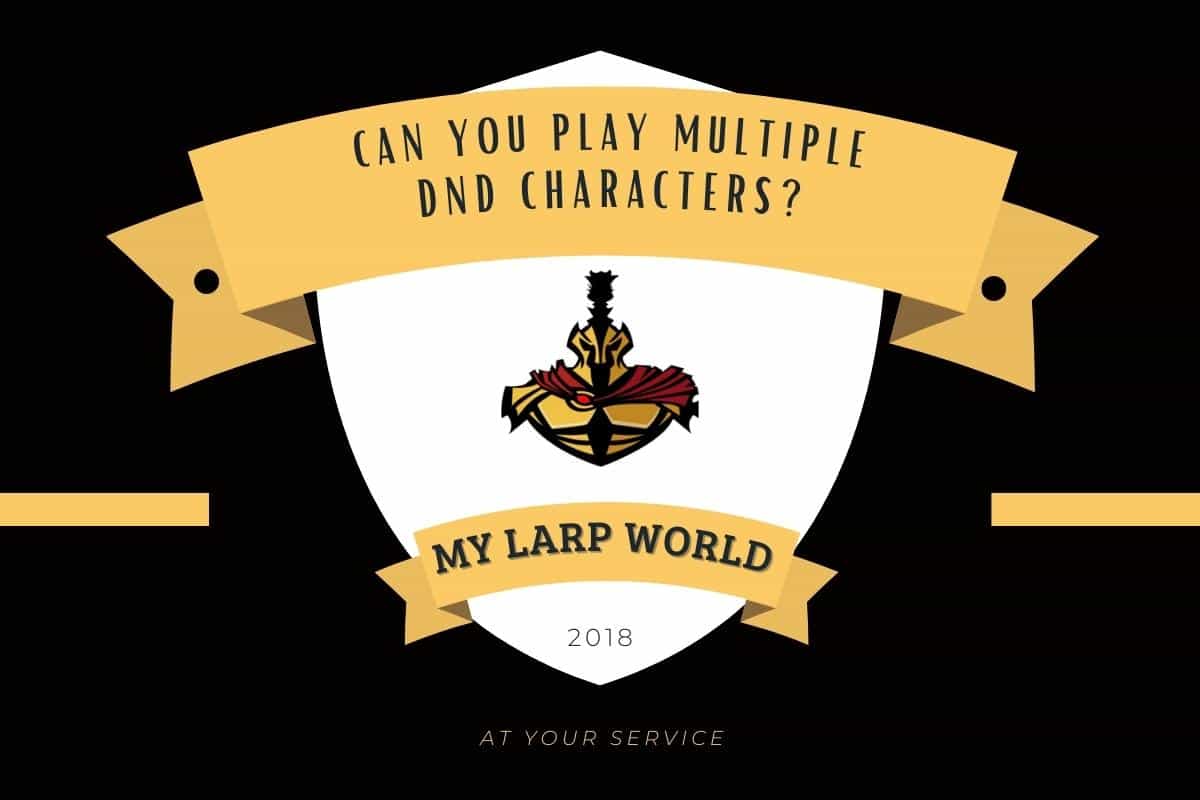Selecting what sort of character you want when creating your first one isn’t easy, since there’s so much to choose from. That’s one of the reasons why some people want to play two characters at once.
It isn’t clear for some people whether or not you can play two characters at once, however, or what that would look like. So, can you play multiple characters at once in DnD?
Yes, you can. However, this is only if your DM allows it. Playing more than one character has both pros and cons. You will most likely favor one character more than the other, and the game will naturally take a longer amount of time to progress. However, it will let you try two classes you are interested in at once, and you will be able to coordinate strategy easier.
Let’s go through why it may, and may not, be a good idea to play multiple characters in DnD.
Can You Play Multiple DnD Characters?
There’s nothing in the rules that prevents you from playing two characters, and even if there were, there are no in-game mechanics that would prevent you from doing so anyway.
Playing two characters will keep you busier than playing one, obviously, so make sure that you know both classes fairly well before starting. If you don’t, there’s a chance that you’ll spend a good chunk of time bogged down in different books while everyone’s waiting for you.
Playing two characters can be a good idea if you’re facing difficulties. Another alternative is to tune the adventure accordingly, of course, but another alternative is letting people play an additional character.
Another reason to play more than one character is if you’re a limited number of people playing. For example, in a party of one DM and two people that are going to be PCs, playing two characters each can enable you to play adventures that are designed for four people.
Make sure that everyone’s comfortable with you playing an additional character, too. If you’re the only one who’s playing two characters, you’ll get to be in the spotlight more than the other players.
The Pros and Cons of Playing Two Characters
Let’s go through some pros and cons of playing two characters in DnD. These are mostly just the natural results of doing this.
Pros
- Finding out what you like best – If you are curious about playing more than one class, race, or simply two different character archetypes, you can try them both at once.
- Coordination – You will have an easier time in combat since you can coordinate your two characters at the same(ish) time.
- You always have an extra character – If one of your characters meets their maker, you always have a spare one that you can keep playing without having to create a new one.
- More interactions – Your characters will have different skill sets, which means that you get to interact with more stuff in the world. This applies to social interactions, solving puzzles, performances, and many other things.
Cons
- Hogging the spotlight – If you’re the only one that’s playing two or more characters, then you’ll have at least double the time that everyone else has, which can get frustrating for other party members.
- Roleplaying – Roleplaying interactions between your characters might get a bit strange, or even nonexistent. Solve this by referring to your character in the third person instead of talking to yourself like a lunatic.
- Attachment issues – You’ll probably like one character more than the other, and as a result, you might end up neglecting the other character. After that, you’ll effectively have one character with an NPC that consumes a lot of time.
- Slower pacing – The game naturally becomes slower, since there’s always an extra step. This goes not only for combat, but NPC interactions, buying new stuff for your party, and so forth.
Related Article: What Should You Avoid When Creating a Character?
The Importance of Character Motivation in DnD
Let’s discuss the importance of character motivation in DnD, as this is an important aspect of playing two characters. Characters in DnD need to have motivations, i.e. goals.
Providing them with goals and motivations will provide reasons for why they’re in the world you’re playing in. What are their long-term goals? What are they after?
When playing with two or more characters, make sure that you provide this to both of your characters. If you don’t provide cohesive backgrounds and motivations for both of your characters, or do a lot of work for one of them and not a lot for the other, their presence might feel a bit forced.
This, in turn, will hinder good roleplaying. That being said, it’s not impossible to provide both of your characters with cohesive backgrounds, it might just take up a bit more of your time. Lastly, if you can’t be bothered with this, consider multiclassing instead if your DM allows it.
What is Multiclassing in DnD?
Multiclassing is when you level in another class in addition to your main class. Why is this relevant to what we’re discussing? Well, a lot of people want to use two or more characters because they want to try more than one class at once.
With the multiclass solution, you don’t have to create two characters to accomplish this. Multiclassing is fairly straightforward – from level 2, you can begin collecting points in other classes. It’s not really recommended that you do this that early, but you could.
If you begin to multiclass from level 2 you’ll be split in the early goings of two classes, which won’t benefit you. Instead, it’s recommended to start multiclassing from level 5.
There are certain prerequisites your character needs to meet before you can begin specializing in another class. In general, you need to have a score of 13 in one or two stats, depending on the class. These stats are stats that your other class is reliant upon.
For example, if you want to multiclass into Barbarian, you need a strength score of 13. This is a cool way of making multiclassing more realistic. More strength-reliant classes will have an easier time specializing in other strength-reliant classes.
Should New Players Multiclass?
In the very beginning, it might be advisable to not multiclass, as players will already have their hands full. Learning the basics of DnD themselves can take a bit of time, and can indeed be slightly overwhelming for some new players.
If your DM does allow multiclassing and you’re new at the game, you need to be careful what you put your leveling points in. It’s a lot easier accidentally building a very inefficient character with multiclassing than with the regular ol’ method.
Some DMs take a roleplaying approach to multiclassing. In other words, they might allow it if it fits the character’s other class, personality, or storyline. A lot of DMs don’t like min-maxing, which is when you try to, as efficiently as possible, minimize your weak points while maximizing your strengths.

